Behind the scenes at Canaïma Gin
By Rupert HohwielerGin by name, Amazonian spirit by nature, Canaïma is in a category of its own as SB found out on a recent trip to Destilerías Unidas in Venezuela.
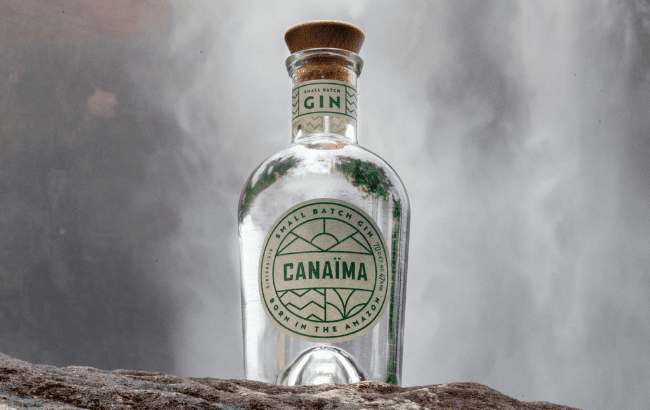
Canaïma is a small-batch gin produced by DUG (Distillers United Group) at Destilerías Unidas in Venezuela, the same family-run business behind Cocuy Saroche and Diplomático rum, among various other spirits.
Although produced in Venezuela, the group defines it more as an ‘Amazonian spirit’ rather than a ‘Venezuelan gin’ due to its backstory and the special botanicals that make up its liquid.
Recently, The Spirits Business headed out to the distillery, which is situated in Venezuela’s Lara state surrounded by jungle, to find out what it’s all about – and we caught up with Jose Ballesteros Jr along the way, who is in charge of DUG’s export department and the son of the group’s CEO, José Rafael Ballesteros Meléndez.
Gin is a crowded and difficult category to compete in (who doesn’t have a gin these days?) and Canaïma falls in the underdog bracket with its small budget pitted against a very labour-intensive production process, but the gin – founded in 2019 – has managed to stay in the international market with success.
It can be found behind the bars of high-end hotels in London like The Savoy and The Connaught, among other luxury venues in places that have a big cocktail culture, as well as retailers such as Selfridges.
Of its exotic nature, Ballesteros Jr says: “It only has the name of gin to be categorised, but for us, it is an Amazonian spirit. We put in some juniper to be in the gin category, but for us, it’s not a gin.
“Whenever you talk about gin, well, there are so many gins,” he continues. “Everybody in Europe can make it, but when you’re talking about something so deep with such storytelling like Canaïma, people get attracted and knowing the background we have as spirits producers, people will give it a try.”
Amazonian spirit
Making gin takes time and effort, of course, and patience, but Canaïma takes things up a few notches. It is made of 19 botanicals, eight traditional (including juniper, orange peels, caraway, coriander and angelica root), and then the rest is a mix of ingredients hand-sourced by Indigenous communities from the Amazon.
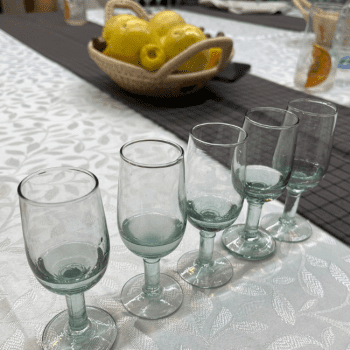
The latter of which include tupiro (sweet with acidic notes), merey (a cashew fruit with nutty notes), semeruco (similar characteristics to cherry), ponsigue (sweet with a slightly bitter aromatic profile) , white grapefruit peel (bitter and woody notes), red grapefruit peel (juicy notes), açaí berries and parchita (a local passionfruit), plus copoazu, pijiguao, uva moriche and seje.
It’s an extensive list and as the distillery deals with real, natural fruits, they have to be in season to be picked, and at a specific point of maturity, with each then undergoing its own maceration and distillation.
For our tasting there were only seven botanicals available to us at the time due to seasonality, with each ingredient bringing their own flavours to the final product.
Among those was semeruco, known as ‘miracle fruit’ in Lara state, which while having the appearance of a tomato, had a sweet cherry taste. Another was tupiro, which looks like a cross between an apple and a peach, and has a mix of sweetness with acidic notes.
The logistics are not straight forward, as Ballesteros Jr explains: “Now it’s the rainy season and for some fruits at the moment, we need to take them from Ciudad Bolívar to our plant. The trip is like 36 hours by car. Indigenous tribes collect the fruit and just to get those companies, we have to pay around US$7,000 which is a lot for Venezuela – just to get the fruit and then to take it back up.
“If you want to send a container from Venezuela to London, it’s going to cost you around €3,000, but to get the fruit it’s nearly double from inside Venezuela.”
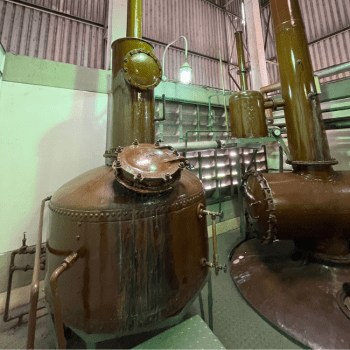
It’s a lengthy process to create the separate distillates too, around 48 hours for each.
“Normally for other gins,” Ballesteros Jr says, “they put all the botanicals together in a bag, and they do it just once. Here, we have to do 19 different distillations in order to have one batch.”
The distillery works with the fruit and not the seeds. They are all cleaned, unpeeled and treated individually before maceration. Grapefruit’s maceration takes around 24 hours at 20 degrees, but for fruits with stronger botanicals, it can take 36 hours at 50 degrees. There’s then a second distillation with fresh fruits at 45 degrees and botanicals at 80 degrees. The distillations are done in a 500-litre copper pot still.
As for the juniper Destilerías Unidas uses, the distillery acquires it from the Netherlands and there are no additives or sugar involved. Therefore, the brand categorises it as a London Dry style, but at the same time it’s not a dry gin – it’s tropical and fruity.
“With Canaïma, we need people to understand and go ‘okay, it’s a gin because it has juniper, but it’s something more,” Ballesteros Jr expresses.
“It’s not a typical flavour I find when I taste a gin, if you take a different gin, all of them are in the bunch of flavours – very dry, very aromatic, perfume – in our case, as I said, with flavour, it’s fruity and on the nose, it is very different from the rest.”
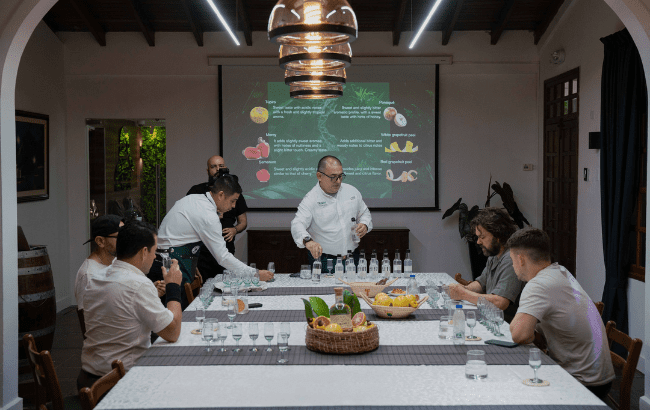
Conservation efforts
As mentioned above, the distillery collaborates with local foundations to protect the Amazon and support its indigenous communities – and this is as much a part of the Canaïma Gin MO as the spirit itself.
Without these communities there would be no Canaïma, and the distillery has created jobs to improve their livelihoods, with men hand-collecting the gin’s Amazonian botanicals and women crafting materials like coasters and woven baskets, which are part of Canaïma’s packaging.
The distillery also donates 10% of its sales to Amazon conservation, partnering with and reinvesting those funds into two NGOs: Tierra Viva and Saving the Amazon. The former develops the brand’s visibility material, made by indigenous women, while the latter has a reforestation initiative that encourages consumers to plant a tree in the Amazon, tracking its progress, seeing where it is and monitoring its growth cycle.
The connection to the Amazon drew in bartender Simone Caporale, who is the co-owner of Sips, a bar in Barcelona recognised as one of the best in the world.
Caporale ventured out to Venezuela in 2019 for a trip to Destilerías Unidas, falling in love with the Amazon and joining forces with DUG Group on a spirit representative of the rainforest.
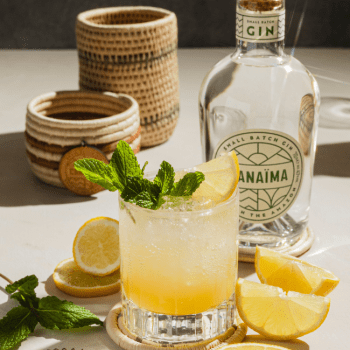
“He was a very young bartender when we first met him,” Ballesteros Jr recalls. “He was in the spotlight – but then he said he wanted to work with us. We do Diplomático, but he was not interested in collaborating with a rum brand.
“When he saw and understood that the story of Canaïma was a project, he said ‘I want to be involved, show me more’.
“We were amazed at how a European guy, a young guy who was famous, was so involved. He had so much knowledge about the Amazon that we said ‘Simone, what can we do?”
Caporale then worked with the distillery on fine-tuning the gin’s recipe, apparently staying in the Amazon over the Christmas and New Year period four years ago.
Having a big-name bartender in the mix isn’t a marketing move, but it has helped the brand’s sway in Europe’s cocktail circles.
Canaïma’s main markets are in Europe where the DUG Group has a strong distribution network.
Ballesteros Jr notes the UK is “very important”, but its not the biggest market because “it’s quite saturated with the big groups and their gins”.
He adds: “Italy is a big one for Canaïma, as are Spain and the Czech Republic. We are trying to find a new distributor in Germany. Austria is a small market, but an important one. Then the Nordic market with Sweden and Denmark are also very important for us.”
Talking about gin demand at home in South America, Ballesteros Jr contends the market is not so big but young people are starting to drink more of the spirit, driven by culture in Europe.
“The people who drank gin before were old guys like my grandfather, as they had the knowledge to drink gin and tonics in different cocktails.”
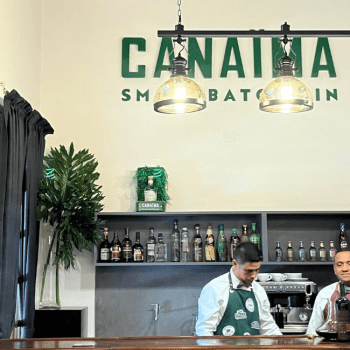
Instead, Ballesteros Jr says the South American market is dominated by blended Scotch. “Those brands that you don’t see much of in the UK – like Buchanan’s – but here are very big because people mix them with water and ice. It’s quite refreshing and not very strong. People like that because the weather conditions are so hot all year round that they just want to stay refreshed and keep the body hydrated.
“It also shows your acquisition power. If you have a bottle on the table, okay, it shows you have some money. It’s very aspirational. People like to show off with a bottle of what they can afford and what they can drink normally. If you want to have a night and you want people to see you, that’s what you do.”
Educating drinkers about a gin of Canaïma’s nature takes time – not everyone will be privy to an individual tasting of each distillate to fully understand its flavour, or visit Venezuela itself, as we were fortunate enough to.
However, Ballesteros Jr maintains: “As always, the wheels are moving and we are working to better communicate our product.”
Related news
The Gin Masters 2025 – Second Tasting results
